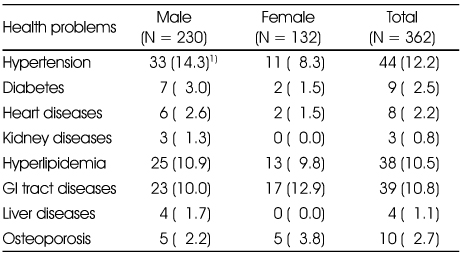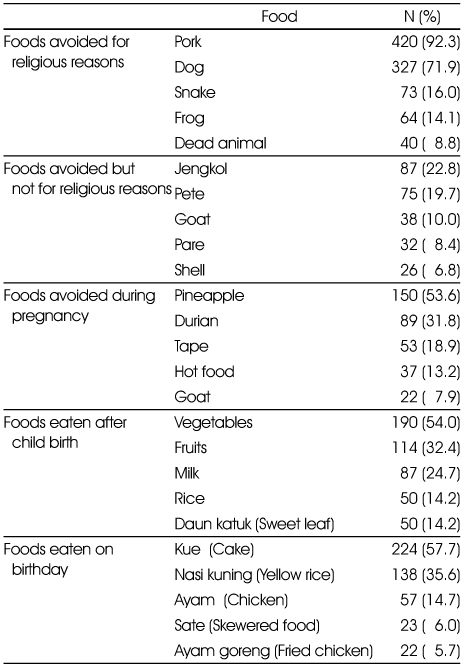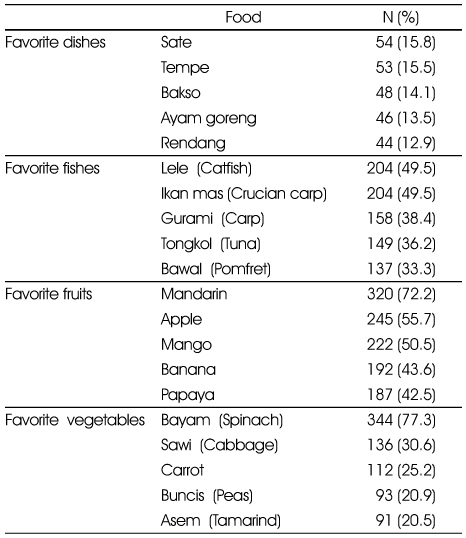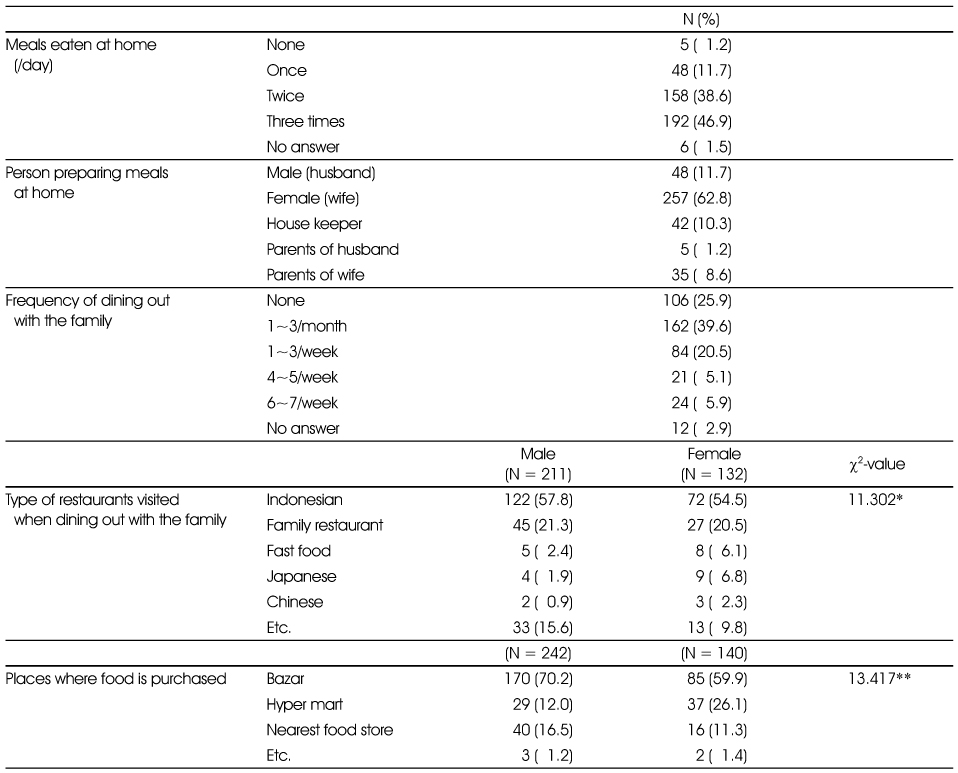References
1. Atmarita . Nutrition problems in Indonesia In : Proceedings of 2005 Integrated International Seminar and Workshop on Lifestyle-related Diseases at Gadjah Mada University, Indonesia; 2005. p. 1–14.
2. Driane C, Hall B. Culture shock: Insdonesia U.S.: Graphic Arts Center Publishing Company; 1991. p. 64–117.
3. Choi JO. A critical studies for interpretations on food taboo. J Hist Cult 2009;34:419–454.
4. el Ati J, Beji C, Danguir J. Increased fat oxidation during Ramadan fasting in healthy women: an adaptative mechanism for body-weight maintenance. Am J Clin Nutr 1995;62(2):302–307.
5. Ham HH. Migrant workers in Korea in terms of race and class. Korean Cult Anthropol 1995;28:199–221.
6. Han WY. Soybeans of the Indonesia. Korea Soybean Soc News 2012;302:1–2.
7. Hartini TN, Padmawati RS, Lindholm L, Surjono A, Winkvist A. The importance of eating rice: changing food habits among pregnant Indonesian women during the economic crisis. Soc Sci Med 2005;61(1):199–210.
8. Jang SY. Persectives of multiculturalisms: Its meaning and practice in Korean society. J Humanit 2007;53:307–348.
9. Ji SK, Jang HC, Choi HM. A case-control study of food habits and diet intakes of women with gestational diabetes mellitus. Korean J Nutr 2008;41(1):41–53.
10. Kang HH. Integration of Korean multicultural society: Factors and policy directions. Chung-Ang Public Adm Rev 2006;20(2):5–34.
11. Kassab S, Abdul-Ghaffar T, Nagalla Das S, Sachdeva U, Nayar U. Interactions between leptin, neuropeptide-Y and insulin with chronic diurnal fasting during Ramadan. Ann Saudi Med 2004;24:345–349.
12. Kim SH. Cultural policy of the multicultural society In : Proceeding of 2006 summer season anouncement of the Korean Association Public Admininistration; 2006. p. 1–10.
13. Kim SJ. Cultural conflicts and responses of migrant workers - With the case of Indonesian workers. J Korean Cult Stud 2008;38:153–184.
14. Kim SS. Apa kabar Indonesia Seoul: Greennuri; 2010. p. 129–131.
15. Kim HY. A study of food culture in South-Eastern asia - about dietetic culture in Indodesia. Korean J Diet Cult 1992;7(1):9–17.
16. Korea Immigration Service. Korea Immigration Service statistics 2012 Korea Immigration Service; 2012. p. 14–34.
17. Lee JM, Jang NS, Cho WK. A study on nutrient intake of college student in Seoul and Yanbian. Korean J Diet Cult 2001;16(5):492–503.
18. Lee SI. Healthful living during the pregnancy. Health Educ 1970;1:74–81.
19. Lee SY. The survey of the state of eating habits of Muslims residing domestically Graduate school of Traditional culture and arts, Sookmyung women's university; 2006. Dissertation.
20. Lee YH. Vietnamese food culture and vietnamese food in Korea. Southeast Asian Rev 2011;21(1):49–91.
21. Ministry of Foreign Affairs Republic of Korea. Overview of the Indonesia Ministry of Foreign Affairs South Asian and Pacific Affairs Bureau Southeast Asia Division; 2013. p. 4–5.
22. Ministry of Health and Welfare. Korea Health Statistics 2011: Korea National Health And Nutrition Examination Survey Ministry of Health and Welfare Office for Healthcare Policy: 2011. p. 38–48.
23. Ministry of Security and Public Administration. The statistics of foreign residents' present condition by the regional government 2012 cited 2013 November 15. Available from
http://www.mospa.go.kr.
24. Oh MS. Contemporary transformation of islamic consumption and the malaysian halal certificate system. Korean Cult Anthropol 2012;45(3):3–62.
25. Sartika RA. Effect of trans fatty acids intake on blood lipid profile of workers in East Kalimantan, Indonesia. Malays J Nutr 2011;17(1):119–127.
26. Setyowati . An ethnography study of nutritional conditions of pregnant women in Banten Indonesia. Makara Kesehatan 2010;14(1):5–10.
27. Soekirman . Food and nutrition security and the economic crisis in Indonesia. Asia Pac J Clin Nutr 2001;10Suppl. :S57–S61.
28. Son JA, Kim SY, Choo HJ, Nam YJ. Public awareness and donning practices of traditional dresses and muslim dresses among Indonesian Muslim. J Korean Soc Costumes 2012;62(7):117–132.
29. Song DY. Cultural interpretation on the patterns of consumption and supply systems of Islamic (halal) food in Korea. Korean J Middle East Stud 2011;32(1):217–249.
30. Trepanowski JF, Bloomer RJ. The impact of religious fasting on human health. Nutr J 2010;9:57.
31. Um IR. Halal, foods allowed by god Gyeonggido Paju: Hanul; 2011. p. 5–68.
32. Wulandari LP, Klinken Whelan A. Beliefs, attitudes and behaviours of pregnant women in Bali. Midwifery 2011;27(6):867–871.








